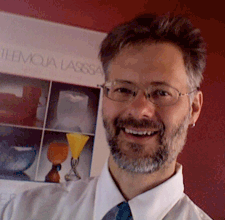Pilgrim Reindeer in Pisa, 1348
a free multimedia novel by
Thomas A. DuBois, University of Wisconsin-Madison
 |
Pilgrim Reindeer in Pisa, 1348 a free multimedia novel by Thomas A. DuBois, University of Wisconsin-Madison |
|
|
|
Part III. Italy. 40. Crossing the Mountain. [December 25, 1347]
In this chapter, I wanted to have Bávlos experience an almost supernatural success in learning Italian, and so he does with these stories. I also wanted to give some more examples of Stállu tales as a point of contrast with the Christian Christmas narrative. As Coppélie Cocq has shown in her study of Sámi storytelling, Stállu was often associated with dangers faced by women: rape, kidnapping, forced marriage. So it seemed logical to me that Bávlos might tell Maddalena such stories on their way to her parents' village. And the fact that this feared ogre was also occasionally recognized as a family ancestor seems to reflect a very pragmatic way of viewing the realities of life: certainly it would be ideal not to marry a Stállu, but in those cases in which a woman did end up in such a marriage, her descendents might in fact benefit from the ancestry.
From Corniglia to Pisa is only c. 50 miles, but I needed to get Bávlos there soon. The Plague entered Pisa right after Epiphany in 1348, so Bávlos has to do all his business and get out of there by then if he is to avoid the first onslaught of the disease in this region of Italy.